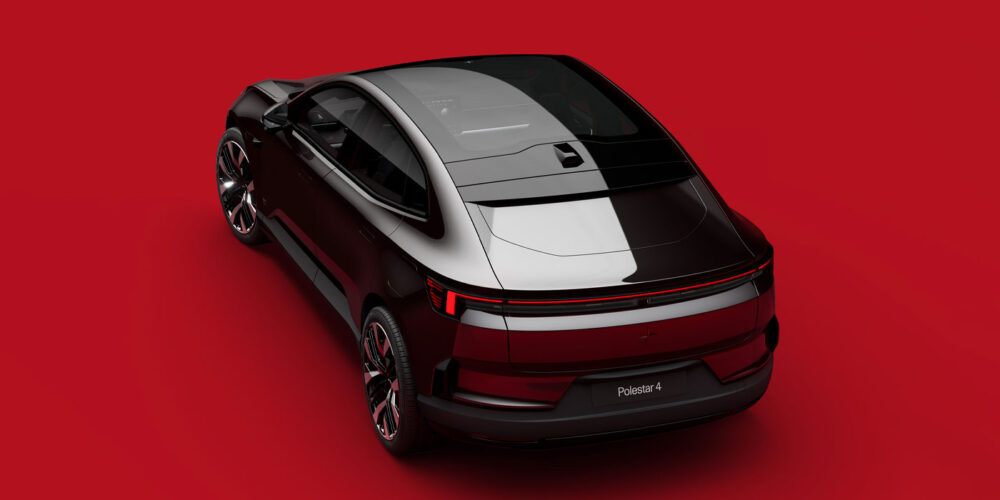Polestar introduced its newest EV, the Polestar 4, an electric performance SUV coupe and the second SUV in the brand’s lineup, at this year’s Shanghai Auto Show. The company says the Polestar 4 is positioned between Polestar 2 and Polestar 3 in terms of size and price.
Polestar 4 launches first in China, with production planned to begin in Hangzhou Bay, China, in November 2023. Details for the North American market will be presented in 2024, with the vehicle arriving later that year. Indicative launch pricing is from $60,000.
The company says the Polestar 4 is the fastest production car the brand has developed. The 0-60 mph sprint can be completed in less than 3.8 seconds and the maximum power output is 400 kW (544 hp), the company says. Motors are of a permanent magnet, synchronous design.

Both dual- and single-motor versions will be available, with single-motor versions featuring rear-wheel drive. Semi-active suspension features in the dual-motor version provide an additional layer of adjustment between comfort and performance dynamics, Polestar says, and wheels range from 20 to 22 inches in size, depending on the version, with tires supplied by Pirelli and Michelin.
A 102 kWh battery is fitted to both long-range versions. The long-range dual motor features 400 kW (544 hp), 686 Nm (506 lb.-ft.) A disconnect clutch allows the car to disengage the front electric motor when not needed, to maximize range and efficiency.
Up to 200 kW DC and 22 kW AC charging is included for all versions, and the charge lid is motorized. Bi-directional charging is included, with vehicle-to-load (V2L) capability at launch providing for external devices to draw power from Polestar 4. A heat pump is fitted as standard, allowing the car to capitalize on ambient heat when preconditioning the cabin and battery.

A new drive optimization function allows the driver to select between range or performance driving modes in the long-range dual motor version. Performance mode sharpens up responsiveness from the powertrain and engages both motors at all times for full power delivery and best performance, Polestar says. Range mode prioritizes efficiency, adapting the powertrain to a calmer style and forces the use of only the rear motor.
The long-range single-motor version features a 200 kW (272 hp) and 343 Nm (253 lb.-ft.) motor at the rear and a preliminary range target of over 300 miles EPA.
Built on the Sustainable Experience Architecture (SEA) developed by Geely Holding, Polestar 4 is a D-segment SUV coupe. The standard full-length glass roof is available with optional electrochromic functionality, allowing for opaque or transparent upward visibility. Thanks to the elimination of the rear window, the glass roof stretches beyond the rear occupants’ heads.
The rearview mirror is replaced by a high-definition screen that shows a live feed from a roof-mounted rear camera. The digital feed can be deactivated to allow drivers to instead see rear occupants when needed.

The vehicle’s infotainment system powered by Android Automotive OS and the Snapdragon Cockpit Platform now utilizes a 15.4-inch landscape-oriented screen. The vehicle also features Google built-in, including Google Assistant, Google Maps and Google Play.
A Harman Kardon audio system is available as an option, with 12 speakers and a 1,400-watt channel-hybrid amplifier. An additional two headrest speakers are added to each front seat with the optional Nappa Pack, raising the total to 16. Apple CarPlay is also included.
As with all other Polestar cars, regular over-the-air (OTA) updates allow for new features and improvements to be sent remotely to all vehicles, removing the need to visit a shop to gain the latest software, the company says.
The vehicle will also include the SuperVision Advanced Driver Assistance System from Mobileye. A total of 12 cameras, one radar and 12 ultrasonic sensors are fitted as standard. This includes a driver monitoring camera, which only relays data and does not record video, to monitor the driver’s eyes and head movements to help avoid incidents related to fatigue or incapacitation. Together with hands-on detection in the steering wheel, the driver monitoring system helps to keep the driver actively engaged in driving, as required, Polestar says.
Read the full article here


